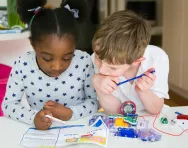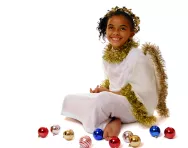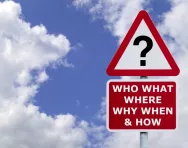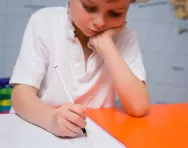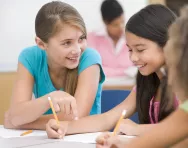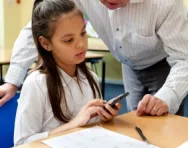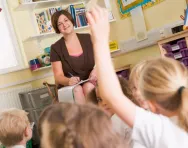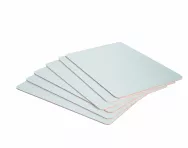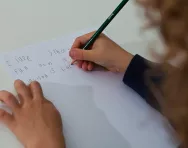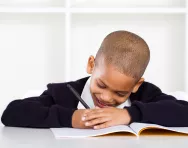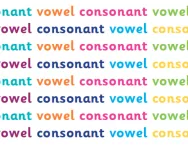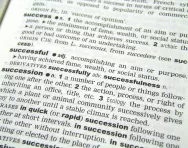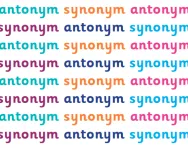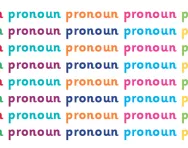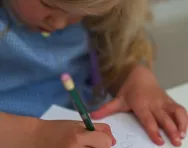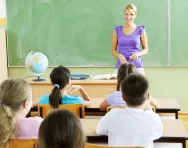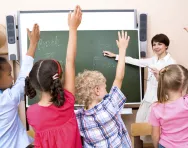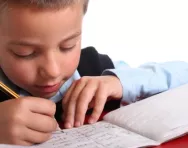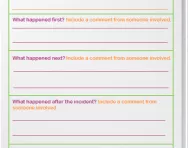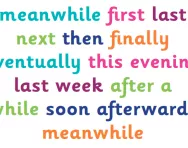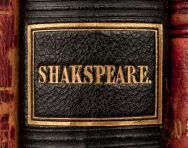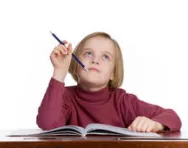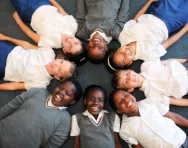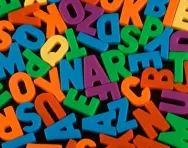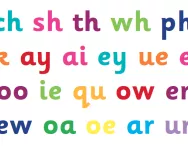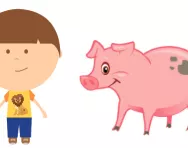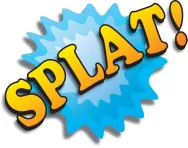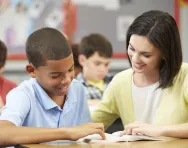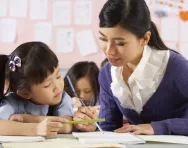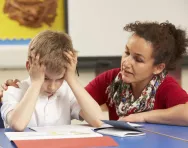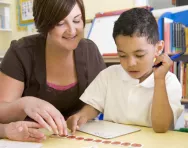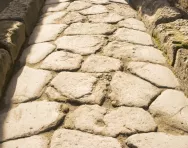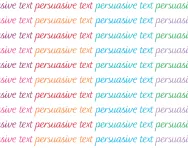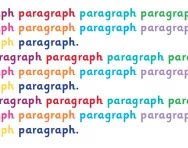What is a product?
In maths the product of two numbers is the result you get when you multiply them. We explain how children are taught multiplication vocabulary in KS2 and what kind of problems they might be asked to solve,
7 learning activities for autumn weather
Do you remember diving into a pile of crisp, golden autumn leaves? Collecting conkers? Walking through first-frost grass and feeling it crackle under your feet? Autumn and early winter are really inspirational seasons for outdoor activities, so wrap up warm and march the whole family out of the door. They won't want to come back in!
How to create a budding engineer
Engineering underpins almost every aspect of modern life. So what will your child learn about engineering and technology at school, and how can you encourage their enthusiasm? Lucy Dimbylow finds out.
Brilliant Nativity costumes to buy
Pressed for time on getting an outfit together for your child’s Nativity play? We’ve found a range of costumes to dress your little Mary, Joseph, star or shepherd in that won’t break the bank!
What is a success criteria / WILF?
Find out what success criteria (also known as the 'WILF') are and how your child's teacher will use success criteria to boost learning focus.
What is a Learning Objective / WALT?
Heard your child talk about their LO, or their WALT? Teachers use learning objectives to help children understand what is expected of them in the classroom. Find out what a learning objective (or WALT) is and how learning objectives are used in primary school.
What is a DUMTUM?
Find out what a DUMTUM is and how this technique will help your child to set out their work correctly.
What are talk partners?
Find out what a talk partner is and why having a talk partner will benefit your child's learning in the classroom.
What is 'scaffolding' learning?
Find out what 'scaffolding' learning means and how teachers use this technique in the classroom to help children master different skills.
What are interactive whiteboards?
Find out what interactive whiteboards are and how they enhance learning in the classroom.
What are mini-whiteboards?
Find out what mini-whiteboards are and how they enhance learning in the classroom.
What is text-marking?
Text-marking is a technique taught in schools to help children recognise the different features of a text. Find out how teachers explain the technique to children and how it can help with their comprehension of different types of texts.
What is Look, Cover, Write, Check?
Look, Cover, Check, Write is a strategy your child will be taught in schools to help them learn spellings. Find out how the technique is taught in the classroom so you can reinforce learning at home in the same way.
What are vowels and consonants?
We explain what vowels and consonants are and how primary-school children are taught to identify CVC, CCVC and CVCC words, vowel digraphs and consonant digraphs.
What is a root word?
We explain what a root word is and how prefixes and suffixes can be added to root words to turn them into words with different meanings.
What are synonyms and antonyms?
We explain what synonyms and antonyms are and how children are taught to use synonyms to improve their writing in primary school.
What is a pronoun?
We explain what a pronoun is and how primary-school children are taught to use pronouns to avoid repetition in their written work.
What is extended writing?
At school your child will be expected to produce pieces of extended writing, which is a writing task completed independently. Find out how teachers will help your child develop this skill and how you can support their learning at home.
What is modelled writing?
Modelled writing is a technique teachers use to model for children how they could carry out the thinking process when writing a story. See an example of how this process could work.
What is shared writing?
Shared writing is a collaborative technique teachers use to help children develop ways to improve their writing. See an example of shared writing at work and an explanation of how it gives children a model of what they are expected to write.
What is a letter string?
Learning certain letter strings will help your child with their reading and spelling. Find out about different letter strings and tips to help your child remember them.
What is a writing frame?
Your child will be taught to use a writing frame to help them set out stories they are writing. Find out how teachers explain how to use a writing frame and the features they contain.
What are time connectives?
Find out how your child's teacher will explain the concept of time connectives and ways in which your child will be encouraged to use them to improve their writing.
What are biography and autobiography?
In Key Stage 2 your child will learn about biographical and autobiographical texts. Find out about the features of these texts and help your child write their own texts at home.
What is an explanation text?
An explanation text is a specific type of writing and includes some identifiable features. Find out how your child's teacher will teach explanation texts and what your child needs to include in their own explanation texts.
What is a non-chronological report?
A non-chronological report is a piece of text that isn't written in time order. Find out how your child is taught to read and write non-chronological reports in primary school.
What is brainstorming?
Children learn how to brainstorm in school to generate ideas and solve problems. Find out how teachers encourage children to develop this skill and how it can help improve your child's written work.
What are phonemes?
The smallest unit of sound is called a phoneme and your child will be taught about these as part of their phonics learning journey. We explain how the teacher will explain phonemes and how you can help your child when they are starting to put sounds together at home.
What is a consonant cluster?
When two consonants appear next to each other it is called a consonant cluster. We explain how teachers explain consonant clusters to children and how you can help your child spot them when you are practising reading at home.
What is a trigraph?
Your child will be taught about trigraphs as part of their phonics learning journey. We explain how teachers explain trigraphs to children and how you can reinforce learning at home.
What is a digraph?
Your child will be taught about digraphs as part of their phonics learning journey. We explain how teachers explain the concept to children and how you can help your child spot digraphs at home.
What is a metaphor?
A metaphor is a figure of speech where two things that are normally unrelated are compared to each other. Find out how teachers explain metaphors to school children and how to encourage your child to spot metaphors and use them to improve their writing.
What is onomatopoeia?
Onomatopoeia is a word that names a sound, but also sounds like that sound. Find out how teachers explain onomatopoeia to school children and how to encourage your child to use it to improve their writing.
What is guided reading?
A guided reading or whole class reading session takes place every day in school. We explain what happens during these sessions and how you can help your child develop the skills of decoding and comprehension at home.
Teachers’ tips for reading comprehension
Reading comprehension exercises are a staple homework activity, not to mention a significant part of SATs. Lucy Dimbylow asked teachers for their insider tips on getting to grips with comprehension and how to help your child at home.
How to work with your child’s SENCO
Having a healthy working relationship with your child’s SENCO can help ensure they get the support they need. Here’s how to ensure you make a good team. By Lucy Dimbylow
How a SENCO could help your child
If your child has a special educational need, the school’s SENCO is likely to play a big part in his day-to-day life and learning. Lucy Dimbylow highlights nine ways in which she can help make your child’s school journey easier.
4 ways to travel back to Roman London
Travel back in time 2,000 years and enter Londinium, a Roman city which stood where the capital does today. Bring the Roman empire to life without leaving the UK (and for free!) with a walk round Roman London, from Londinium's amphitheatre to the remains of the Roman Wall. Francesca Fenn of Step Outside Guides offers a few ideas for a Roman discovery day for KS1 and KS2 children.
What is persuasive writing?
Persuasive text is written to make the reader do something. Children are taught this form of non-fiction text in Key Stage 2; we explain the key features of persuasive text and how you can support your child's learning at home.
What is a paragraph?
Paragraphs are sections of text, used to structure writing to make it clear and easy to read. We explain how the use of paragraphs is taught in KS2 and how you can help your child improve their writing by using paragraphs at home.


